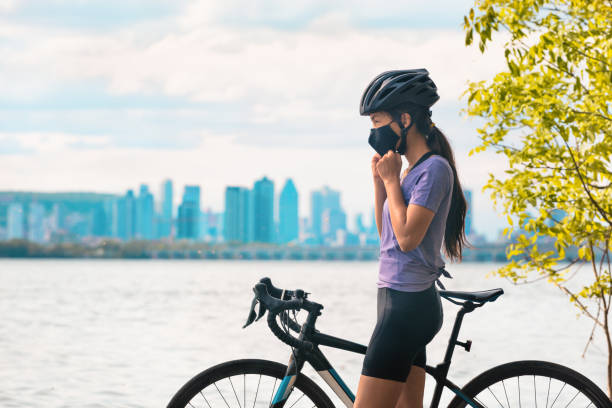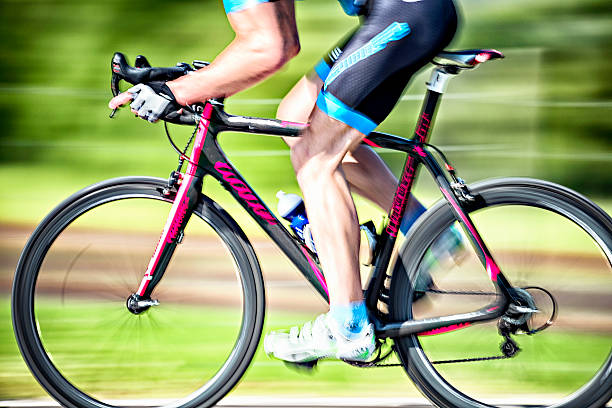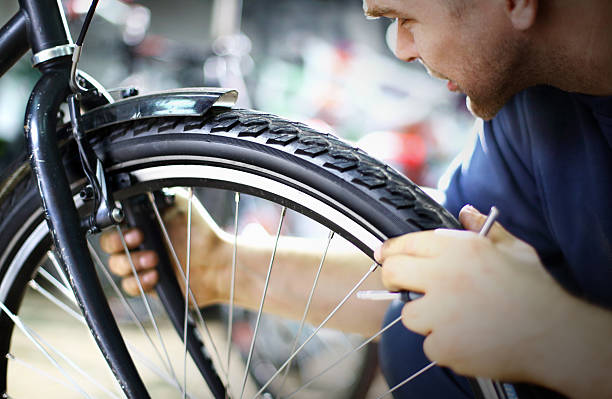The top-tier mountain bikes in the sector are specially designed to navigate challenging terrains. Both the Diamondback Bicycles Overdrive Hardtail Mountain Bike and the 2020 Gravity FSX 1.0 are the reigning champions for this tough landscapes. Equipped with sturdy hardtail and full-suspension frameworks, these bikes are prepared to conquer any kind of hurdle. Available in a range of sizes, they offer the opportunity for necessary enhancements and maintenance. These high-quality bikes are unparalleled in their ability to address the trials of rugged mountain terrain.
You may also like:
Cycling Gloves
BMX Bikes
Fixie Bikes
Road Bikes
|
3.5
|
3.5
|
3.5
|
|
$8.00 ($8.00 / Fl Oz)
|
$520.08
|
$39.98 ($5.00 / Ounce)
|
Made for Adventure
Whether you need a bike for your daily commute or an adventure ride, the Road Cheetah performs well on a street road or mountain terrain. It has 21-speed settings to adjust with the terrain you’re biking on. The bike includes durable wheels partnered with large knobby tires and front suspension, beneficial for off-road biking.
Lightweight Frame
Compared to a steel frame, this product is relatively lighter. Its weight can be beneficial to the bike’s performance. It could be easily hauled to your vehicle and lugged around in areas when you can’t ride it.
The bike is 95% assembled upon receipt, and you can easily put the remaining parts together with the step-by-step instruction that came with the box.
- Versatile use
- Easy to assemble
- Lightweight frame
Off-Road Trail Bike
This adult mountain fat bike is made to conquer all terrain types, especially the hard ones. This bike is made with a steel frame body and super-sized all-terrain knobby tires to suit your rides. The lightweight but sturdy alloy rims compensate for the weight of the metal frame to reduce the bike’s total weight.
Safe and Comfortable Ride
The trail bike is equipped with twist shifters for convenient speed change, while the seven-speed rear derailleur is for an easier hill climb. It is designed with beach cruiser pedals supported by front and rear disc brakes for safety.
The headset is threadless and can be adjusted to accommodate height requirements, but it is recommended for bikers 5’6” to 6’ tall.
- It has a potential for upgrades
- Can accommodate big guys
- Good value for money
- The plastic parts of the bike are not durable
Suitable for Long and Rough Rides
Made from hydro-formed aluminum, the mountain bike is lightweight and durable. Its full-suspension construction is made for those who want extra comfort off-road. Both the front and the rear suspension are adjustable, and there’s a bit more room for user customization.
21-speed Shimano derailleurs have been installed on the bike. Ready to ride for thousands of miles, the bike is among the most durable in its class when it comes to shifters.
Lightweight V-brakes are added both to the front and the rear wheel. These brakes are lighter than many similarly-priced disc brakes for immediate stopping power.
Offers Warranty
Long 5-year frame warranty and 1-year parts warranty back the bike. The frame enjoys one of the most extensive warranties, and it represents a durable option for those who might fear potential quality issues coming from entry-level alternatives.
- Made with a Shimano rear derailleur
- Designed with a riser handlebar
- 5-year frame warranty
- 30-day tubes warranty
For Young Riders
You can train your young ones to ride various trails with the Huffy Hardtail mountain bike. It’s perfect for young bikers ages 12 to 19 – 58 to 70 inches tall. Beginners will appreciate the comfort and safety features of the bike while traversing dirt roads.
The 24” X 1.95” knobby tires tear dirt roads safely and easily. The suspension fork reduces the shock from bumpy trails and potholes.
This bike is also equipped with a micro-shift twist shifter combined with indexed Shimano TZ-31 rear derailleur features that could ease the ride on an uphill, downhill in any type of road. It delivers 21-speed on demand for better acceleration control. The removable rear derailleur guard ensures consistent gear operation.
The handlebar is strategically designed to be slightly higher to maintain an upright posture while riding. The ATB saddle is well-stitched to ensure durability and adjusted to a comfortable height.
- A good training trail bike
- Designed for comfortable posture
- Comfortable seat
- Poor gear system
How to Choose the Best Mountain Bike
There’s more to mountain biking than the type of bike to consider. Materials, wheel size, and tires impact the ride quality and the bike’s overall feel. Many others could also play with these variables, such as design. But here’s the basic information a new rider should start from.
Frame
Frame material impacts rigidity, shock perception, and even the mountain bike design. As with other bikes, aluminum, steel, and carbon frames are the most popular options, each with pros and cons.
Aluminum
Aluminum bikes are the most popular today. Together with other materials such as carbon fiber, aluminum is versatile. But most importantly, aluminum is affordable and easy to cut. This makes it an excellent choice for frame construction.
Aluminum is also used in Seatpost production. Power transfer is excellent in aluminum, mainly with thick tubes. This means the material is seen across most types of mountain bikes. Aluminum is also used in bike components. For example, it is one of the lightest and most affordable materials for rims.
Steel
Steel is one of the most affordable bike frame materials. It is used for its extra rigidity and low cost in mountain bikes. The extra weight is not such an issue as with road bikes. As a result, steel mountain bikes are popular even today. The extra weight is not such an issue as with road bikes. As a result, steel mountain bikes are popular even today.
Corrosion is an issue with steel. However, given the correct construction, steel bikes may last for decades. With proper care, steel can also last for years, even without showing signs of wear. However, there are other disadvantages of steel bikes.
For example, the material is harder to work with and to cut than aluminum. Molding steel requires higher temperatures. As a result, the know-how and the effort put into steel bike frames become a skill that is only mastered in years.
Carbon fiber
Carbon fiber is directional by nature and very easy to work with. The material offers the lightest option for modern bikes, and the final results can be very lightweight, even twice as light as aluminum. But at the same time, carbon fiber is very expensive to manufacture, and such bikes are sold at such a high price.
The main disadvantage of carbon fiber is its cracking nature under pressure. The material doesn’t bend under pressure. It breaks. This means excessive force can destroy a bike. However, the occurrence of such events is very rare in the first place. Real-world examples rarely back the endless discussions on the fragility of the materials.
Titanium
Resilient titanium is the premium choice for many bikes; this includes MTB frames. Titanium is very hard by nature and hard to crack or even bend. However, the material is not the lightest. At the same time, a titanium frame will never be too affordable due to the rare nature of the material.
Most mountain bikers see titanium as a lifetime material. It makes the bike last for decades, and except for parts that might need changing, the frame remains the same after years of use.
Wheel size
Wheel size is also important in mountain biking. Not all bikes are made with the same frame size, depending on the user’s height. But wheel size is also different from one case to another.
27.5”
The 27.5” tires are still popular in mountain biking. The smaller wheels are hard to replace on busy trails and are agile, fast, responsive, and fun to use. When there are a lot of obstacles to avoid, the wheels offer the best performance at an incredible value.
The physics is different for smaller wheels, and the tallest riders might not like them. But the average rider will have a lot of fun on smaller wheels.
29”
The large 29-inch wheels stay in motion with small obstacles better than smaller wheels. Momentum is considerably better, so they might prove useful in climbs and descents alike. The extra motion power generated by the wheels means there’s more traction to the bike. This might mean they’re not as agile but that they can start and keep moving a bit better than smaller wheels.
The Tubeless Debate
Riding with or without tire tubes is often debated in the cycling community. Both of these riding methods have their pros and cons.
Tubeless tires are easier to handle as they come with less weight. They also save a bit more time assembling the wheel, which is the case for those who change tires frequently, especially while traveling.
But riding tubed tires has its benefits as well. It makes the tire cleaner with less sealant and saves riders when it needs to be inflated to its maximum capacity. But tubeless tires are also subject to punctures or pinches. Hitting a rock hard with a tire and a tube can pinch the tube and eventually lead to a flat tire. Both options must be tried with test rides at some point by every cyclist.
Weight
The weight of the bike is crucial for a pleasant riding experience. Many aspects come into place with weight. The frame is the most important, with the biggest impact on the final weight. Frame weight can considerably slow down even the most agile wheels.
Enduro bikes can be lightweight since they don’t need rear suspension. Between 20 and 30lbs, these bikes are normally considered lightweight. E-bikes are the heaviest mountain bikes due to the extra battery and thick tubing to fit the battery.
Long rides tend to be the most troublesome with a lot of weight. Users also need to consider components to add to the final weight. Brakes and the groupset design and materials can add moderate weight to the bikes.
Groupsets
Mountain bike groupsets come with brakes and a drivetrain. The drivetrain is made out of the cranks, chainrings, chains, cassette, shifters, and derailleurs. The chain is crucial in mountain biking as it transmits pedaling power. However, the chain can bounce around uneven terrain, leading to shifting problems. A chain tensioner can solve this issue.
Groupsets are normally complex on mountain bikes compared to road bikes due to the demanding nature of the rides. They come with single, double, or triple cranksets. Here’s how to read and interpret their codes. A 44/34/24 groupset shows the number of teeth on each cog.
Price
The mountain bike price can vary from hundreds to thousands of dollars. The more expensive a bike is, the more likely its components are made with high-quality materials and finishing.
Basic, versatile mountain bikes start at $1,000. The basic mountain bike only costs a few hundred dollars at this price. Better components include higher-quality groupsets, thru-axles, and quick-release mechanisms. Many of these components were not around a decade ago, and they can make bikes seem a lot different to many people stepping up from old mountain bikes.
Types of Mountain Bikes
Before buying a new mountain bike, it’s important to understand their differences and what makes them unique. Some of the bikes are easy to use, while others are only easy to use in specific terrains, as are downhill bikes. It might be complicated to choose the right option with fat bikes and even e-bike making a name for themselves.
Cross-country Bikes
Also known as XC bikes, they are made to tackle long terrains and hill climbs. As a result, these bikes don’t come with rear suspension. Made to represent the versatile performer on smooth ground, it can be compared to the gravel bike in approach.
Cross-country bikes are now seen with different componentry at different prices. It’s safe to say they start at a few hundred dollars and move up to over a thousand dollars for most entry-level performers.
The bikes come with powerful fork suspension. Typical suspension in this range varies from 80mm to 100mm. The tires that go best with the bike and the suspension have a width of up to 2.25inches and a minimum of 2.1 inches.
But these bikes are also recommended for anyone looking to get adventurous on a bike and start exploring mountains and off-road locations. Long weekend rides will be comfortable on XC bikes as they are made primarily to cover ground.
All-mountain Bikes
All-mountain bikes are normally made for enduro fans. Filming themselves in crazy descents, we all know who these cyclists are. Their all-mountain bikes are made to deal with the extra shocks encountered on descents.
A full-suspension all-mountain or endure bike is made with some of the toughest materials in the MTB world, and as a result, it can cost thousands.
The tires on such bikes are normally wider than on an XC bike. With tires between 2.4 and 2.6 inches, the bikes offer an immersive ride and one of the best profiles for descends.
These bikes are normally very aggressive as well. Their geometry changes every year, and it’s worth investing in the latest geometry. Cutting corners and saving on materials and specs are not recommended for clear safety purposes with these types of bikes.
Downhill Bikes
Downhill bikes are specialized in dealing with rough terrain and steep descents. They’re so specialized that they’re even hard to ride on flat surfaces and almost impossible to ride uphill. Normally, cyclists use a cable lift to get to a higher point with these bikes.
With aggressive construction, there are no rocks or ramps that can stand in the way of this bike. The downhill bike is known for its resilience; it comes with top-of-the-line shock absorption, excellent for bike parks. As a result, these bikes often come with minimum shock travel of 180mm. But it’s not unusual to see the suspension of up to 200mm travel with 2.5” wheels on these bikes, either.
The main rider of this bike lives in an area with mountains and steep heels. The downhill bike is not the type to buy for an odd commute or to go shopping with, as it’s difficult to pedal on any other surface that isn’t steep.
Fat bikes
As their name suggests, fat bikes are characterized by wide tires. But why would a cyclist want a larger contact area with the ground? The answer to these questions lies on the ground itself. The wide tires are best for soft surfaces such as snow or even sand. As a result, they glide better, and they don’t sink.
Fat bike tires are not fast. The extra materials often stop them from reaching maximum speeds. These bikes are not recommended for group rides with friends as they prove nearly impossible to pedal just to keep up with the group.
Electric Bikes
Electric bikes have exploded in the past years. Made by the most serious bike manufacturers, they are ready to revolutionize the mountain bike world. Their thick frame makes these bikes easily recognizable, which houses the electric mountain bike’s battery. This battery is very large and adds considerable weight to the bike.
While these bikes won’t win any aerodynamics contests, they offer pedaling assistance, making them easy to live with. Suddenly, hills that couldn’t have been cycled before are easier to ride on. Uphill rides on e-bikes are impossible to match. Even on steep uphill climbs, it’s clear these bikes are made for pedaling assistance.
While bikes don’t require cyclists to pedal, most e-bikes require pedaling. They only assist with a bit of pedaling power. But among their disadvantages is the battery life itself. The heavy bike is considerably harder to pedal when completely drained of the battery.
Another major issue with e-bikes is their price point. Even the cheapest e-bike is very expensive for most riders. This makes their purchase hard to justify. In the conditions where electric motorcycles are cheaper, e-bikes are still a long way from becoming a mass product. However, e-bike technology and geometry are improving every year.
Trail
Trail riding is a bit different from general off-road exploration. A new segment of bikes has emerged for this objective. Trail bikes are a mix between cross-country bikes and downhill bikes. If you look at many YouTubers recording trail rides, most of them now choose trail bikes for the extra shock travel.
The shock absorption capacity on trail bikes is higher than on cross-country bikes. It’s not unusual to see a trail bike with suspension travel between 120 and 140mm. This suspension works well with wide tires and often reaches the 2.3-inch mark.
Riding trails often needs better traction than general cross-country trails. But trails are not limited to the bikes’ performance as their wide tires might take cyclists even further. The wide tires are great for all types of descents. Both tubed and tubeless, these bikes can handle the shocks which normally come with obstacles on the trails.
Full Suspensions and Hardtail Mountain Bikes
The full suspension mountain bikes versus hardtail trail bikes are one of the cycling community’s biggest debates. It represents a point of interest to anyone looking to cycle off the beaten path.
Full Suspension Benefits
Full suspension bikes are more comfortable. They come with shocks in the front and the bike’s rear. This means they are excellent for certain rides, such as downhill. In rare cases, these rides can also be made with hardtail bikes. But in most situations, the full-suspension bike will be the best for ride comfort.
Not all bikes need full suspension. But those normally thinking of mountain bikes prefer double suspension as the bikes are suitable for all types of riding conditions.
Hardtail Benefits
Hardtail bikes only come with fork suspensions. Seen as simpler, lightweight alternatives, these bikes are generally more affordable as they’re easier to manufacture. But these bikes might be all that’s needed for certain riding surfaces. For example, those living in areas with smooth trails might not need to invest in full-suspension bikes.
But hardtails are also easier to maintain and service. There’s no maintenance work outside the basic cassette and oil lubrication. Spoke adjustments might be needed on occasion. But hardtail bikes are very easy to service, and most of these tasks can be done at home without the help of a mechanic.
Frequently Asked Questions
What is the best brand for a mountain bike?
There are many good mountain bike brands. Giant and Trek are among the best. Other known brands include Specialized, Cannondale, Santa Cruz, Konam, Scott, Yeti, Cube, Merida, Rocky Mountain, KTM, Marin, Fuji, Raleigh, etc.
Other mountain bike brands include small brands that make custom bikes. Titanium mountain bike brands can also come with specialized frames that only use this material. But bike brands are now seen across the world at various retailers.
Why single-speed mountain bikes?
Single-speed mountain bikes are easier to maintain. There are no complicated groupsets to worry about. In the event of a crash, a single-speed mountain bike is much more likely to keep ongoing. The simplicity of its system without a range of gears makes it perfect for all types of rides.
Particularly, single-speed mountain bikes are great on flat terrains where no gearing is required. Going up steel heels with fixed-speed bikes is not easy. Going downhill with a single-speed bike is not considerably easier either. There are plenty of new single-speed mountain bikes being manufactured today.
Is Trek better than Giant?
Both Giant and Trek offer similar components. The main difference will be made in the price of the mountain bike. A similarly priced Giant will be very similar to a Trek bike in performance. Both manufacturers have strong components and strong frames.
Both companies heavily invest in research and development. But the two brands are also expected to go head to head with new bikes in 2020 and 2021 as new groupsets emerge in the mountain and gravel bike worlds.
How much faster are road bikes than a mountain?
Generally, a road bike is 20% faster than a mountain bike. Its extra speed is based on its aerodynamic performance. Road bikes have thinner profiles and thinner tires. They are calculated for the lowest amount of wind resistance.
Mountain bikes are made for the best traction. Relying on wider wheels for enhanced traction, mountain bikes become heavy. They then become even heavier simply by adding full suspension on the bikes.
But in both cases, they can’t compete directly. A road bike cannot compete in off-road cycling conditions as a mountain bike cannot compete on paved surfaces for speed. Most cyclists will need to own one of each to get maximum speed on both paved and unpaved roads.
A hybrid is now becoming popular under gravel bikes. But even these bikes are still in their early days, and there’s a lot of research to go into them to make them as efficient as road bikes or as mountain bikes in their riding objective.
Conclusion
Mountain bikes have different types to suit or favor particular riding needs. There are versatile mountain bikes that you can use for various ride types and terrain. When choosing the right mountain bike, make sure you will get the most out of it, and it will serve its purpose for your need.









